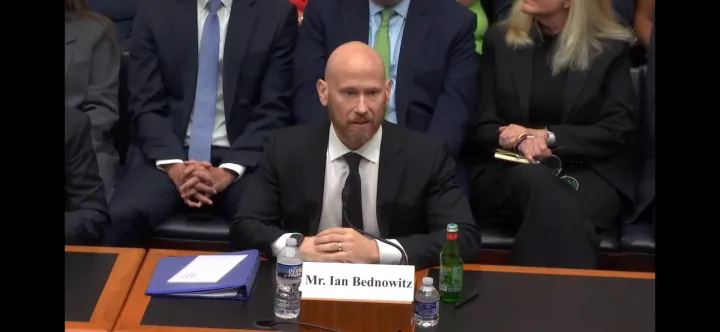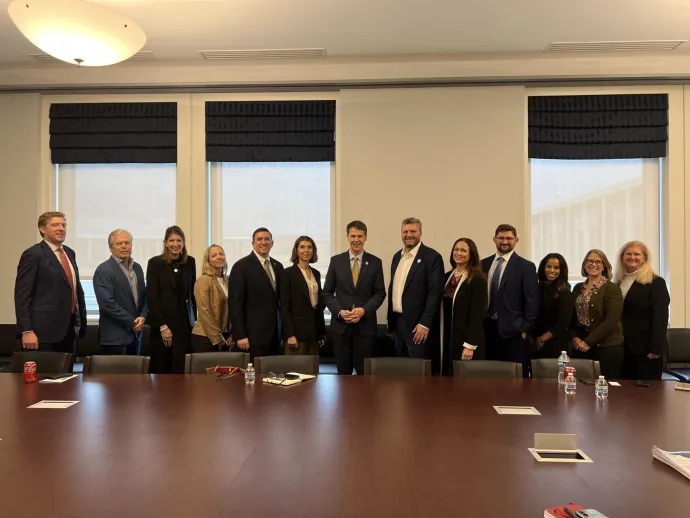Fighting AI-Powered Scams: How Gen Is Working with U.S. Lawmakers to Protect Consumers


Recently, Ian Bednowitz, General Manager of LifeLock at Gen, testified before the U.S. House Committee on Financial Services on the growing impact of AI-driven fraud and the urgent need to strengthen consumer protection.

Later, other Gen team members also visited Washington, D.C., including Leyla Bilge, Global Head of Scam Research, Chad Angle, Senior Director of Reputation Defender, and Kim Allman, Senior Director of Corporate Responsibility & Public Policy. Together, they met with Congressman Shreve, Chairman of the Congressional Stop Scams Caucus, and members of the Global Anti-Scam Alliance (GASA) to discuss the latest trends in scam prevention and the importance of public-private partnerships in protecting consumers.
At Gen, we believe protecting consumers from fraud is not just a corporate responsibility — it’s a shared mission that calls for innovation, collaboration, and policy that keeps pace with technology.

Below are five key takeaways from our time on Capitol Hill and why they matter for the future of consumer cyber safety.
1. Fraud is no longer isolated
Fraud has moved far beyond lone hackers. Today’s scams are orchestrated by organized, global criminal networks operating like businesses — with call centers, scripts, and coordinated infrastructure.
These groups use AI, automation, and breached personal data to launch high-volume, highly targeted campaigns. From romance and investment fraud to impersonation and “pig butchering” schemes, scams have become professional, scalable, and faster than ever.
According to the Global Anti-Scam Alliance, U.S. consumers reported $16.6 billion in fraud losses in 2024 — a 33% increase year over year. Our very own threat intelligence confirms that scams continue to grow in scale, sophistication, and speed.
2. AI is both a threat and a solution
AI is reshaping the fraud landscape from both sides. In criminal hands, it enables industrialized deception — from flawless phishing pages and cloned voices to realistic deepfakes that can fool even cautious consumers.
But AI also powers the defense. At Gen, we’re using it to detect, respond, and protect faster through innovations such as:
- Norton Scam Protection, which detects scams in real time
- Deepfake Protection in Norton 360 Mobile, which flags manipulated audio and video content
- Machine learning systems that identify fraud patterns, impersonation attempts, and synthetic identities before harm occurs
These technologies are designed not just to block threats, but to give consumers the confidence and awareness to act safely in the moment.
3. The numbers tell a human story
The latest Gen Threat Report revealed:
- +21% increase in data breaches
- +340% surge in financial scams
- 2× rise in sextortion activity
Behind each number is a person affected — older adults losing life savings, young consumers facing financial fallout, and families blindsided by criminals who move fast and convincingly.
Fraud doesn’t discriminate, but it impacts groups differently. That’s why Gen focuses not just on detection, but also on recovery and resilience — through identity restoration, dark web monitoring, and education that reduces the risk of repeat targeting.
4. Consumer protection must go beyond technology
AI-powered defenses are essential, but technology alone isn’t enough. Protecting consumers requires a whole-of-society approach that pairs innovation with education, empathy, and real-world recovery.
Gen supports an “All of the Above+” approach that includes:
- Clear, accessible education on scams and AI deception
- Breach notifications that guide real action, not just legal compliance
- Reducing stigma so victims can report and recover faster
- Reliable identity restoration tools that support long-term recovery
We also invest in nonprofit partnerships and awareness programs that meet consumers where they are — especially during high-risk moments like major data breaches or scam surges.
5. Fraud prevention is a bipartisan priority
One message from Capitol Hill was clear: protecting Americans from digital fraud is not a partisan issue.
Leaders across the political spectrum share a commitment to defending consumers and restoring trust in the digital economy. Policy and partnership will both be critical — ensuring enforcement keeps pace with evolving threats and collaboration among government, industry, and civil society remains strong.
As Ian emphasized in his testimony, fraud is a systemic threat to both families and trust in digital life. Tackling it requires collective action.
Looking Ahead
At Gen, our mission is to protect and empower consumers across every stage of their digital lives.
We’re proud to contribute our technology, insights, and expertise to support smarter policy and stronger protections. Our conversations in Washington reinforce what we see every day: that AI can be used to deceive, but also to defend — and the future of digital trust depends on how we choose to use it.
We thank the House Committee on Financial Services and Congressman Shreve for their leadership, and we look forward to continuing our collaboration with policymakers, industry, and community partners to help keep consumers safe in an AI-driven world.